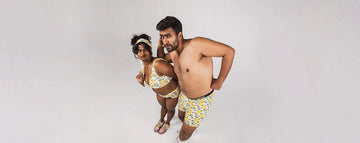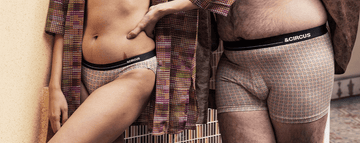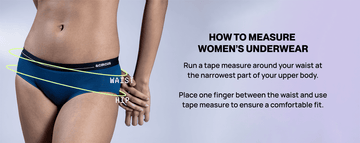From the glittery runways of Milan to the glossy covers of elite fashion magazines, the industry has determined and dictated beauty standards for ages. The fashion industry is a cornerstone of modern popular culture and wields considerable influence over global beauty standards, sometimes acting as a mirror and at other times as the source of society's obsession with physical, unattainable beauty.
As we reflect on the industry's past and present, it's essential to understand its multifaceted relationship with body image in order to best navigate its future. In this comprehensive breakdown, we explore the fashion world's portrayal of beauty standards, the criticisms it has faced, the inherent challenges, and the promising evolution fueled by statistics and figures.
Tracing the Origins: A Glimpse into the Past
Historically, the fashion industry's portrayal of body image has been monolithic. From the curvaceous figures celebrated in Renaissance art to the flapper era’s androgynous looks and the ultra-slim silhouettes of the late 20th century, the fashion world always had a 'preferred' body type.
Whether it was the willowy figures of 90s supermodels or the iconic 'hourglass' silhouettes of the 50s, these standards were both admired and emulated. What is alarming, though, as reported by The Journal of Eating Disorders, is that for decades, runway models have usually weighed 10–15% below the average woman, illuminating the deep chasm between fashion's ideals and everyday reality.
A study from the International Journal of Fashion Design, Technology and Education revealed that the average woman wears between a size 16-18, i.e. M-XL, yet most fashion models wear a size ZS-S. This stark difference between reality and representation has had a profound impact on the way many perceive their own bodies.
Unpacking the Criticisms: A Wake-up Call

The fashion industry, in its heyday, faced a crescendo of criticism. Research from organizations like The National Eating Disorders Association (NEDA) in the US unveiled alarming figures suggesting that media portrayals, including fashion's depiction, significantly influenced eating disorders among youth.
The extent of unattainable standards was such that, a disconcerting study from PLUS Model Magazine unearthed that a vast majority of runway models met the BMI criteria for anorexia. There was visible diversity deficit disorder, a 2017 audit from The Fashion Spot unveiled that only 27.9% of 2,700 model appearances were those of non-white models, underscoring representation gaps. The gaps were not just in size, but race, age, and ability have often been underrepresented or stereotyped in the fashion industry.
Breaking Old Norms: Unchartered Waters
Change is seldom easy, and the fashion industry’s transformation proved no exception and there were hurdles:
Old Guard Resistance: Established designers, anchored deeply in traditional beauty ideals, were often reticent to shift paradigms, and denied deviating from the "accepted" standards.
Revenue Jitters: In an industry worth over $2.5 trillion, brands fretted about whether redefining beauty standards might dent their revenues.
Navigating Tokenism: The early days of change were tumultuous. Genuine transformational attempts were often misconstrued as mere tokenism, they faced backlash, either for being too radical or not doing enough.
The Winds of Change: Fashion's Renewed Ethos
Yet, amidst challenges, the industry began its transformative journey:
Runways Reflect Reality: By 2019, Fashion Week bore witness to unprecedented diversity. The Fashion Spot reported a heartening 38.8% of models were of colour, sizes, & ethnicities.
Realistic Campaigns: Brands like Aerie and Dove have embraced 'real' campaigns, showing unretouched photos and celebrating natural beauty.
Body Positivity Gains Ground: By 2020, major fashion weeks reported that 19% of all runway models were plus-sized.
Beyond Conventional Boundaries: Fashion started embracing all, plus-size fashion lines, adaptive clothing, and gender-neutral collections, speaking volumes about the industry's changing attitude Tommy Hilfiger and Nike have introduced adaptive clothing and hijabs in sports, respectively.
Broken Barriers: Brands like Fenty by Rihanna have broken barriers by introducing products catering to a diverse range of skin tones.
Banning Ultra-Thin Models: Countries like France and Spain have implemented laws that ban excessively thin models from the runway, requiring them to have a medical certificate confirming they're healthy before they can work.
Agents of Change: The New Gen

Youth has been instrumental in catalysing change. With the power of social media, younger generations have:
Amplified Voices: Using platforms like Instagram and Twitter, many have called out brands or campaigns that perpetuate negative stereotypes.
Shared Personal Stories: Real-life testimonials about body image struggles and triumphs have shed light on the importance of positive representation.
Digital Movements: Instagram became a battleground for body positivity, with hashtags like #EveryBodyIsBeautiful amassing millions of uses.
Conscious Consumption: Nielsen’s study underlined a paradigm shift - 66% of millennials globally leaned towards sustainably-driven brands.
Eroding Conventional Norms: Influencers challenging age-old beauty standards, like Tess Holliday, emerged, steadily reshaping perceptions.
Future Directions: Sailing into the Horizon
The journey towards a more inclusive and realistic portrayal of beauty is ongoing. While the fashion industry has made commendable strides, there is still a long way to go. Brands can follow:
Education and Collaboration: Partnering with organizations that promote healthy body image can further the industry's positive impact.
Continuous Engagement: With changing standards, brands must remain receptive. A McKinsey report emphasized co-creation and open dialogue with consumers as the future.
True Inclusion: Beyond tokenism, real diversity is crucial. This includes representation across race, size, gender, and ability.
Authentic Narratives: With 40% of millennials valuing authenticity (as per Forbes), genuine brand stories will be paramount.
The Larger Picture: Fashion's Societal Role
Beyond just clothing, fashion shapes societal perceptions. Its renewed commitment to inclusivity has ripple effects, from boosting individual self-esteem to fostering broader societal acceptance. The responsibility is colossal, and the journey is fraught with challenges, but the direction is unmistakably positive. The youth, representing a powerful demographic, have an essential role in this journey. By supporting inclusive brands, voicing concerns, and promoting body positivity, we can guide the industry towards a future where every individual feels seen, valued, and represented.
The fashion industry's evolving relationship with body image is complex and ever-changing. Once defined by narrow beauty ideals, it now embraces diversity and inclusivity, reflecting society’s shifting perspectives. As beauty standards continue to be redefined, one message stands strong: Beauty is diverse, inclusive, and meant for everyone.





















